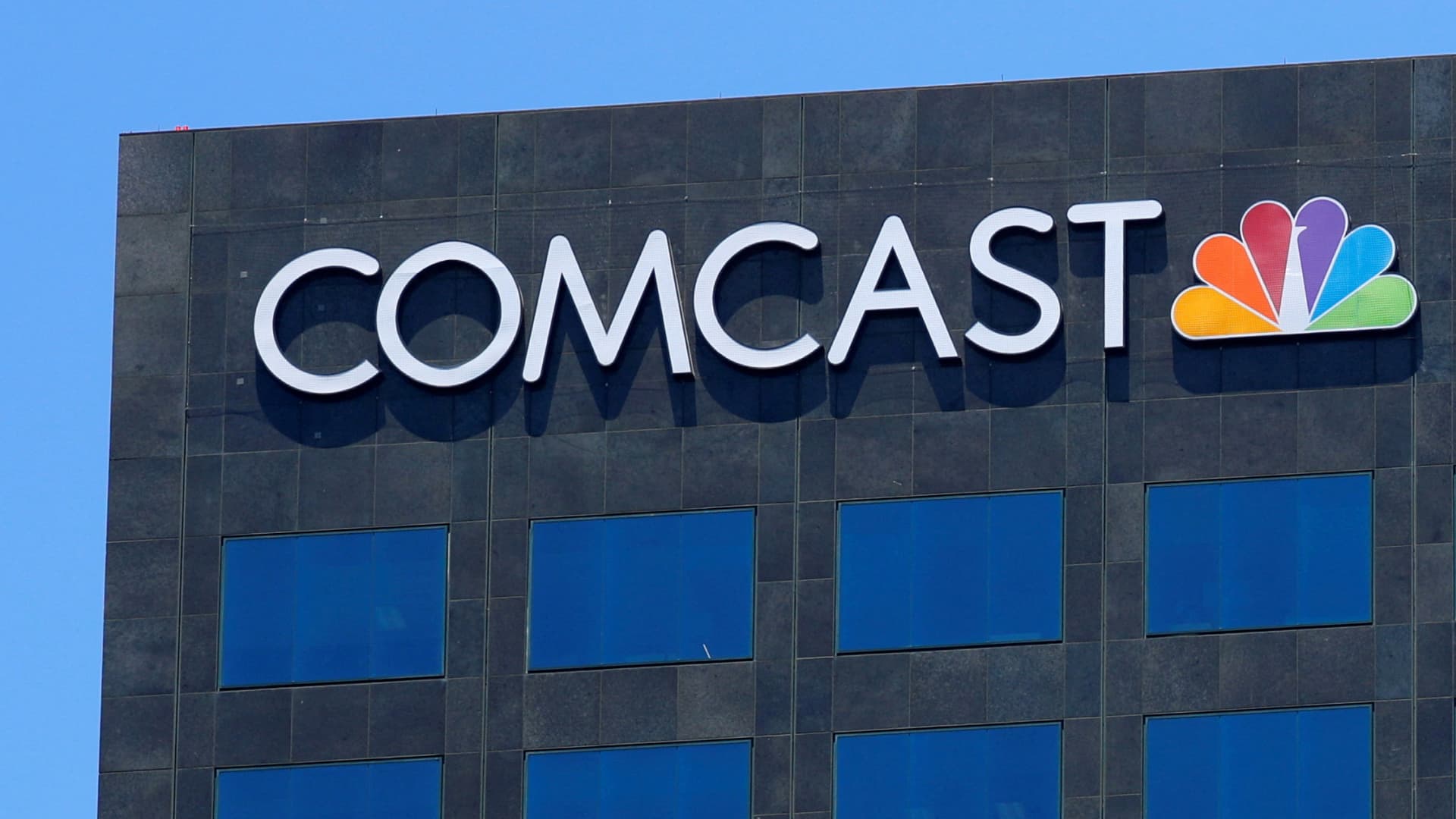Comcast topped analyst expectations with its first quarter earnings report Thursday, despite the cable and media giant’s residential broadband business’s slowing growth and mounting Peacock losses.
Shares of the company rose more than 2% in premarket trading. The stock is up more than 4% so far this year through Wednesday’s close.
Here’s how Comcast performed, compared with estimates from analysts surveyed by Refinitiv:
- Earnings per share: 92 cents adjusted vs. 82 cents expected
- Revenue: $29.69 billion vs. $29.3 billion expected
For the quarter ended March 31, Comcast reported earnings of $3.83 billion, or 91 cents per share, compared with $3.55 billion, or 78 cents per share, a year earlier. Adjusting for one-time items, Comcast posted earnings per share of 92 cents in the most recent period.
Revenue dropped 4% to $29.69 billion from $31.01 billion in the prior-year period, with the company noting that last year it had broadcast both the Super Bowl and Beijing Olympics during the first quarter.
The Philadelphia company said its first-quarter adjusted earnings before interest, taxes, depreciation and amortization grew 3% to $9.42 billion during the first quarter.
Comcast said it returned $3.2 billion to shareholders during the quarter through a mix of $1.2 billion in dividend payments and $2 billion in share repurchases.
Comcast lost 21,000 residential broadband customers during the quarter, but received a slight boost from its business customers. Company executives had warned earlier this year that Comcast was likely to lose broadband subscribers in the first quarter.
Still, it was a sign that Comcast, like its peers, continue to face slowing growth in the broadband business. Executives have said that, while the loss rate of customers is very low, growth has stagnated – especially since the early days of the pandemic – as they face heightened competition from telecom and wireless providers.
The Xfinity mobile business grew to nearly 5.67 million customers during the quarter, a sign that its wireless service – which is provided in conjunction with an agreement to use Verizon’s network – remains a bright spot.
Cable TV customers continued their exodus from the traditional bundle, with Comcast losing 614,000 subscribers during the quarter.
Last month Comcast announced it was changing how it reported its segments, now grouping its Xfinity-branded broadband, cable-TV and wireless services with its U.K.-based Sky, which includes pay-TV services and Sky-branded entertainment TV channels to form the “connectivity and platforms” segment. Total revenue for the segment was about $20.15 billion, a slight drop from the last quarter due to the impact of foreign currency.
The second segment, content and experiences, includes all of NBCUniversal’s TV and streaming business, the international networks and Sky Sports channels, as well as its film studios and theme parks units. Overall revenue for the segment was down nearly 10% to $10.26 billion in the quarter.
The media business’s revenue took a dip in the first quarter, with revenue dropping nearly 40% to $6.15 billion, due to its comparison last year, when NBC aired the Super Bowl and had the rights to the Beijing Olympics for its TV networks and Peacock. Still, Comcast said excluding the $1.5 billion incremental revenue from these two major sporting events, media revenue was still down about 2%.
The tightening ad market showed on Comcast’s balance sheet this quarter, as it has for peers like Paramount Global and Warner Bros. Discovery. Excluding the Olympics and Super Bowl – two events that generate a lot of ad revenue – domestic advertising during the quarter was down about 6% driven by lower TV network revenue and TV ratings decline.
Earlier this week, NBCUniversal faced a shakeup with the ouster of CEO Jeff Shell due to a sexual harassment and discrimination complaint filed by an employee.
Domestic TV distribution revenue was up, excluding the Olympics, which Comcast noted was primarily due to higher revenue at Peacock, which had more paid subscribers.
Comcast said Peacock subscribers grew more than 60% year-over-year to 22 million, and revenue was up 45% to $685 million. Peacock had $704 million in losses, up from losses of $456 million in the same period last year.
Last quarter, the company noted Peacock losses would amount to about $3 billion this year. The streaming service’s costs continued to weigh on the media segment’s earnings.
NBCUniversal’s film segment got a boost from “Puss in Boots: The Last Wish” and horror flick “M3GAN,” during the quarter, with revenue up nearly 2% to $2.96 billion.
The company’s theme park segment kept on rolling higher, especially since the shutdowns of parks during the height of the pandemic, with revenue up 25% to $1.95 billion. The opening of Super Nintendo World helped boost revenue too.

 RULE-BASED Pocket Option Strategy That Actually Works | Live Trading
RULE-BASED Pocket Option Strategy That Actually Works | Live Trading
